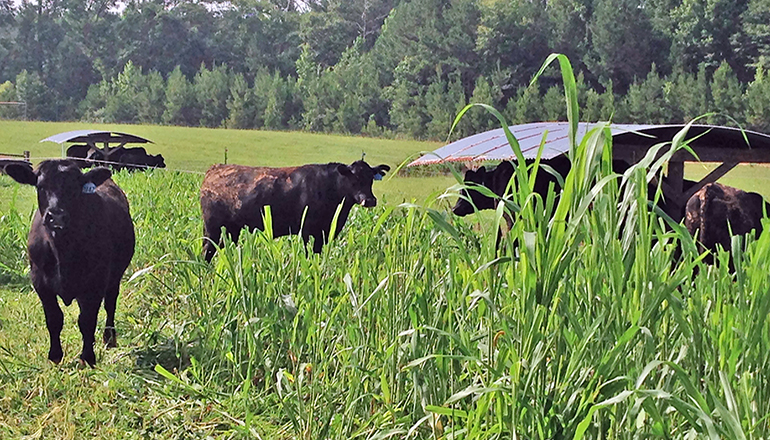Cool-season grasses such as fescue that dominate pasture grass in Missouri need warm weather to grow.
The coldest April since 1907 set back forage for Missouri’s beef cow herds. Now, warm weather with rain creates forage for grazing and haying, said forage specialist Craig Roberts in a weekly University of Missouri Extension teleconference.
New grass growth works best if an early crop of seed heads were clipped. That idea was told in previous teleconferences. “If seed stalks were clipped, grass can grow,” Roberts said. If grass with seed stalks was cut and baled, it makes bad hay. In toxic fescue, seed heads and stems contain ergovaline, which causes fescue toxicosis. Also, stemmy hay has low energy from low digestibility. Seed heads can still be cut, but a couple of weeks of growth have been lost, Roberts added.
Bill Wiebold, an MU crops agronomist, said warm weather also helps corn and soybean crops that got a slow start in cold April weather. After a prolonged dry spell, a mostly statewide rain provided moisture to start warm growing weather. A large part of the state got 2 inches of rain. Other areas received 3 to 5 inches. Spots in extreme northwestern and northeastern Missouri had less than half an inch. This year, weather presented one challenge after another. Though needed, rain makes it difficult to cut and dry grass to bale, regional specialists said.
Now the state is on the way to the warmest May in 124 years, said Pat Guinan, MU climatologist. “May weather became more like July weather,” Guinan said in his weekly update. The last 21 days did not have any below-average temperatures. The seven-day forecast calls for more temperatures at double digits above average. Spotty thunderstorms may bring rain. Overall, the forecast for much of the state calls for a quarter inch of rain through the week ahead. With higher nighttime temperatures, grass continues to grow, Roberts said. It must have moisture, however.
On the crop side, MU Extension weed specialist Kevin Bradley says that formerly weed-free fields now face an explosion of weeds. In pastures, weeds aren’t all bad, the forage specialist said. Livestock can graze tender young weeds. “Young foxtail makes good feed.”
But herd owners must watch for toxic weeds. Management-intensive grazing allows better control of weeds. Weeds can be grazed before they mature. Rain on drying grass leaches nutrients out of hay.
This fall may offer chances for improving bad hay with ammoniation. Bales of poor hay are stacked and covered with black plastic. Anhydrous ammonia gas leaking into the covered hay pile breaks down fibrous cell walls. That improves nutrition.







